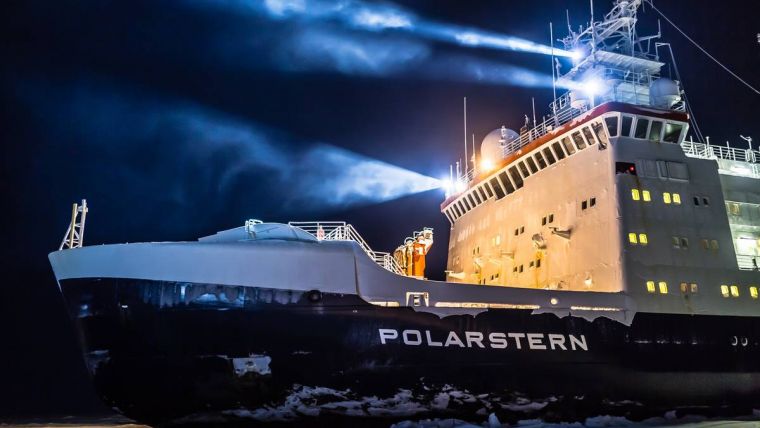German Icebreaker Polarstern Sets Sail to Arctic Waters
After a decade of preparations, the German icebreaker Polarstern will be departing from the Norwegian port of Tromsø. Escorted by the Russian icebreaker Akademik Fedorov, she will set sail for the Central Arctic. Onboard researchers will investigate a region that is virtually inaccessible in winter, and which is crucial for the global climate. They will gather urgently needed data on the interactions between the atmosphere, ocean and sea ice, as well as on the ecosystem.
Drift in the Ice
Hardly any region has warmed as much as the Arctic over recent decades. At the same time, we lack year-round observations from the ice-covered Arctic Ocean. For the first time, the MOSAiC expedition will drift in the ice with a modern research icebreaker for an entire year, allowing scientists to investigate the Arctic winter in the vicinity of the North Pole. The climate processes there are a missing piece of the puzzle that is needed in order to make better prognoses regarding global climate change. It is thought that the extreme warming in the Arctic has an enormous impact on the middle latitudes.
Icebreakers, Helicopters and Aircraft
The MOSAiC expedition, led by the Alfred Wegener Institute, Helmholtz Centre for Polar and Marine Research (AWI) entails unprecedented challenges. An international fleet of 4 icebreakers, helicopters and aircraft will supply the team on its epic voyage. A total of 600 international participants, half of which are researchers, will be part of the mission.
MOSAiC in Hydro International
In the September/October issue of Hydro International, we'll publish a feature on the groundbreaking expedition. Prof. Dr Antje Boetius, Director, Alfred Wegener Institute, Helmholtz Centre for Polar and Marine Research (AWI): "Since 2011 our scientists have been working to make the vision of a major mission in the North-Pole region a reality. During the expedition, Polarstern will be become frozen in the ice and will provide safe accommodation while research is undertaken outside on the sea ice under extreme conditions. We have a network of the best international Arctic researchers from various disciplines to get the mission off the ground. Back in 2011, we couldn’t have imagined how thin the sea ice and how warm the winters would become. It’s high time for the expedition to get underway and to gather data on and images of a region that is changing faster than we can study it."
Photo courtesy Stefan Hendricks.














